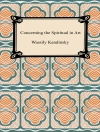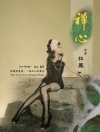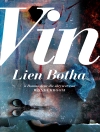Deeply informed and lavishly illustrated, Opening Up Middle English Manuscripts is a comprehensive introduction to the modern study of Middle English manuscripts. It is intended for students and scholars who are familiar with some of the major Middle English literary works, such as The Canterbury Tales, Gawain and the Green Knight, Piers Plowman, and the romances, mystical works or cycle plays, but who may not know much about the surviving manuscripts. The book approaches these texts in a way that takes into account the whole manuscript or codex—its textual and visual contents, physical state, readership, and cultural history. Opening Up Middle English Manuscripts also explores the function of illustrations in fashioning audience response to particular authors and their texts over the course of the fourteenth and fifteenth centuries.
Kathryn Kerby-Fulton, Linda Olson, and Maidie Hilmo—scholars at the forefront of the modern study of Middle English manuscripts—focus on the writers most often taught in Middle English courses, including Geoffrey Chaucer, William Langland, the Gawain Poet, Thomas Hoccleve, Julian of Norwich, and Margery Kempe, highlighting the specific issues that shaped literary production in late medieval England. Among the topics they address are the rise of the English language, literacy, social conditions of authorship, early instances of the ‘Alliterative Revival, ‘ women and book production, nuns’ libraries, patronage, household books, religious and political trends, and attempts at revisionism and censorship.
As of 2024, Opening Up Middle English Manuscripts is available as an ebook, ideal for instructors teaching the book in courses. The fully-searchable PDF ebook version is available through most digital textbook platforms and library ebook aggregaton platforms.
Jadual kandungan
Preface
Acknowledgments
Abbreviations
Glossary of Key Manuscript Terminology
Note on Transcriptions and Transcription Symbols THE FRONT PLATES: Transcriptions, Scripts, and Descriptive Analysis for Learning to Read Literary Texts on the Manuscript Page How to Transcribe Middle English / Kathryn Kerby-Fulton—Bare Essentials 1: A Transcription Is Not an Edition Introduction: The Order of the Plates and Scripts Most Commonly Found in Middle English Literary Texts / Kathryn Kerby-Fulton 1. The Land of Cokaygne (British Library, ms Harley 913) / Kathryn Kerby-Fulton2. ‘Ihesu Swete’ (Newberry Library, MS 31) / Kathryn Kerby-Fulton3. The Pricke of Conscience (Newberry Library, MS 32.9) / Kathryn Kerby-Fulton4. Chaucer’s ‘Cook’s Tale’ (Hg) (National Library of Wales, Peniarth MS 392D, Hengwrt MS 154) / Kathryn Kerby-Fulton5. Chaucer’s ‘Cook’s Tale’ (Cp) (Corpus Christi College, MS 198) / Kathryn Kerby-Fulton6. Omnis plantacio (formerly The Clergy May Not Hold Property) (Huntington Library, MS HM 503) / Kathryn Kerby-Fulton7. Hoccleve ‘s ‘Chanceon to Somer’ and Envoy to Regiment des Princes (Huntington Library, MS HM 111) / Kathryn Kerby-Fulton8. Langland, Piers Plowman (Bodleian Library, MS Douce 104) / Kathryn Kerby-Fulton9. Sir Degrevant (Cambridge University Library, MS Ff.1.6, Findern MS) / Linda Olson10. Wisdom (Folger Shakespeare Library, MS V.a.354, Macro MS) / Linda Olson Chapter 1. Major Middle English Poets and Manuscript Studies, 1300–1450 / Kathryn Kerby-Fulton A Brief Overview of Topics Covered in This Chapter I. BL MS Arundel 292, Archaism, and the Preservation of Alliterative Poetry c. 1300–c. 1450II. BL MS Harley 2253 and Principles of Compilatio, or: Why Read the Harley Lyrics in their Natural Habitat?—Bare Essentials 2: Anglicana Script and Profiling the Individual ScribeIII. Gawain and the Medieval Reader: The Importance of Manuscript Ordinatio in a Poem We Think We Know—Bare Essentials 3: Assessing Emendation in a Modern EditionIV. The Rise of English Book Production in Ricardian London: Professional Scribes and Langland’s Piers Plowman—Bare Essentials 4: Some Basic Concepts of Editing, Types of Written Standard Middle English, and Scribal Handling of DialectV. Some of the Earliest Attempts to Assemble the Canterbury TalesVI. The Scribe Speaks at Last: Hoccleve as Scribe E Chapter 2. Romancing the Book: Manuscripts for ‘Euerich Inglische’ / Linda Olson —Middle English Romances in the Auchinleck, Thornton, and Findern ManuscriptsI. Englishing Romance: The Auchinleck Manuscript II. Romancing the Gentry Household: Robert Thornton’s Homemade Family Library—Thornton Names in the Lincoln and London ManuscriptsIII. Courting Romance in the Provinces: The Findern Manuscript Chapter 3. The Power of Images in the Auchinleck, Vernon, Pearl, and Two Piers Plowman Manuscripts / Maidie Hilmo I. Looking at Medieval Images II. The Auchinleck Manuscript III. The Vernon Manuscript IV. The Pearl Manuscript V. Two Piers Plowman Manuscripts and the Ushaw Prick of ConscienceVI. Conclusion Chapter 4. Professional Readers at Work: Annotators, Editors, and Correctors in Middle English Literary Texts / Kathryn Kerby-Fulton I. Categories of Marginalia: The Annotating and Glossing of Chaucer II. The Annotations in Manuscripts of Langland’s Piers PlowmanIII. Annotations and Corrections in the Book of Margery Kempe: Cruxes, Controversies, and Solutions—Appendix on the Red Ink Annotator and Previous Annotators in BL MS Add. 61823IV. The Quiet Connoisseur: The First Annotator(s) of Julian of Norwich’s Showings in the Amherst Manuscript (British Library, MS Add. 37790) Chapter 5. Illuminating Chaucer’s Canterbury Tales: Portraits of the Author and Selected Pilgrim Authors / Maidie Hilmo I. Introduction II. The Decoration and Borders of the Hengwrt and Ellesmere Manuscripts III. The Historiated Initial with an Author Portrait: A Further Development of the Hengwrt Tradition IV. The Ellesmere Traditions: Illustrated Pilgrim Authors V. Conclusion Chapter 6. ‘Swete Cordyall’ of ‘Lytterature’: Some Middle English Manuscripts from the Cloister / Linda Olson I. Nourishing the Spirit of Religious Women: Vernacular Texts and Manuscripts II. Monastic Manuscripts of Chaucer: Literary Excellence under Religious Rule—The Contents of London, British Library, MS Harley 7333III. Lots of Lydgate and a Little Hoccleve: Chaucer’s Successors in Monastic Hands IV. ‘Sadde Mete’ for Mind and Soul: Contemplative and Visionary Texts in the Cloister V. Taking it to the Streets: Middle English Drama from the CloisterReferences Cited
Illustration Credits
Index of Manuscripts and Incunabula
General Index
Mengenai Pengarang
Kathryn Kerby-Fulton is The Notre Dame Professor of English at the University of Notre Dame. She is the author most recently of Books Under Suspicion: Censorship and Tolerance of Revelatory Writing in Late Medieval England, which won the Haskins Medal from the Medieval Academy of America. Maidie Hilmo, an affiliate of the University of Victoria, is the author most recently of Medieval Images, Icons, and Illustrated English Literary Texts: From the Ruthwell Cross to the Ellesmere Chaucer. Kerby-Fulton and Hilmo are coeditors of The Medieval Professional Reader at Work: Evidence from Manuscripts of Chaucer, Langland, Kempe, and Gower and The Medieval Reader: Reception and Cultural History in the Late Medieval Manuscript. Linda Olson is a writer and developer of distance education courses in English literature for the Open Learning Program at Thompson Rivers University in British Columbia. She is the coeditor with Kathryn Kerby-Fulton of Voices in Dialogue: Reading Women in the Middle Ages.












